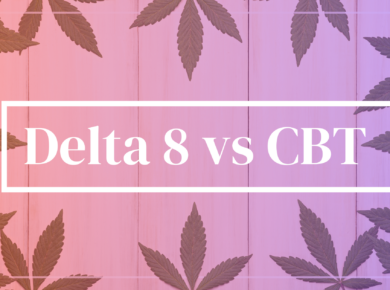THCV (Tetrahydrocannabivarin) and CBDa (Cannabidiolic Acid) are both intriguing cannabinoids found in the vast world of hemp and cannabis plants. While they share certain attributes, their differences are profound and worth noting.
THCV is a lesser-discussed cannabinoid but holds its own unique place in the cannabis realm. While it mirrors THC in its structural attributes, its effects set it apart. The potency and characteristics of THCV can be quite diverse depending on the dosage consumed.
CBDa, in contrast, is the raw, unheated version of the renowned CBD (Cannabidiol). This transformation from CBDa to CBD occurs through a process known as decarboxylation, typically induced by heat. Given its raw nature, CBDa’s properties differ from CBD, especially in the way it interacts with our body’s endocannabinoid system.
To put it succinctly, THCV and CBDa, despite both being essential components of the cannabis plant, exhibit variations in structure, origin, and interactions with the human endocannabinoid system. Their effects can differ widely based on a slew of factors, like individual physiology, the specific strain, and the chosen method of consumption.
Remember, before diving into the use of any cannabinoid products, it’s crucial to be aware of local legal regulations.
Many States allow hemp derived cannabinoids under the 2018 Farm Bill as long as they contain less than .3% D9 THC. Some States have explicitly banned cannabinoids like Delta 8, so check your local rules and regulation before purchasing.
Here’s the rules for Kush.com and more details
Frequently Asked Questions (FAQs)
- What Makes THCV and CBDa Different? THCV and CBDa are both integral to hemp and cannabis. THCV, a lesser-known cannabinoid, presents unique effects that can shift with dosage. CBDa, conversely, is the raw form of CBD, turning into CBD upon heating.
- How Are These Compounds Produced? Both THCV and CBDa originate from the hemp plant’s natural biosynthesis. THCV comes from cannabigerovarin acid (CBGVA), and CBDa from cannabigerolic acid (CBGA).
- Are THCV and CBDa Present in All Hemp Strains? No, not all hemp strains boast significant THCV or CBDa levels. Their presence and concentrations can fluctuate depending on the specific strain and growth conditions.
- How Do Their Effects Contrast? THCV tends to offer a clear, invigorating effect. CBDa doesn’t give a high and is less explored since it often converts to CBD before intake.
- Potential Uses in the Hemp Industry? THCV’s unique effects have piqued interest, leading to exploration in varied product applications. While CBDa often transforms into CBD, its inherent properties are also under research. Both signify promising research avenues in the hemp sector.
Shop





